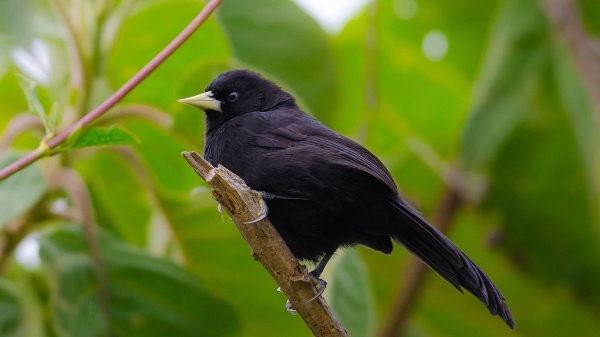Facts About Yellow-billed cacique
The yellow-billed cacique, a striking bird belonging to the Icteridae family, stands out as the sole species in the Amblycercus genus. This avian marvel is easily recognizable due to its glossy black feathers, dark gray legs and feet, vivid yellow or yellow-orange eyes, and a yellow bill with a subtle gray tint. Measuring approximately 23 cm (9.1 inches) in length, the yellow-billed cacique is found across a diverse range of countries, including Belize, Bolivia, Colombia, Costa Rica, Ecuador, El Salvador, Guatemala, Honduras, Mexico, Nicaragua, Panama, Peru, and Venezuela.
There are three distinct subspecies of the yellow-billed cacique, each inhabiting different regions: A. h. holosericeus, A. h. flavirostris, and A. h. australis. These birds thrive in subtropical or tropical moist lowland forests, subtropical or tropical moist montane forests, and even heavily degraded former forest areas.
In terms of diet, the yellow-billed cacique primarily feeds on insects, other invertebrates, and occasionally fruits. It employs a unique pecking technique, similar to that of a woodpecker, to extract food from branches and bamboo. In certain locales, it specializes in feeding on bamboo, while in others, it forages from a variety of vegetation.
In the springtime, the yellow-billed cacique distinguishes itself from its relatives in the Icteridae family by constructing a robust, cup-shaped nest rather than the more common hanging woven nests. This distinctive nesting behavior is just one of the intriguing aspects of this remarkable bird.

 Nicaragua
Nicaragua